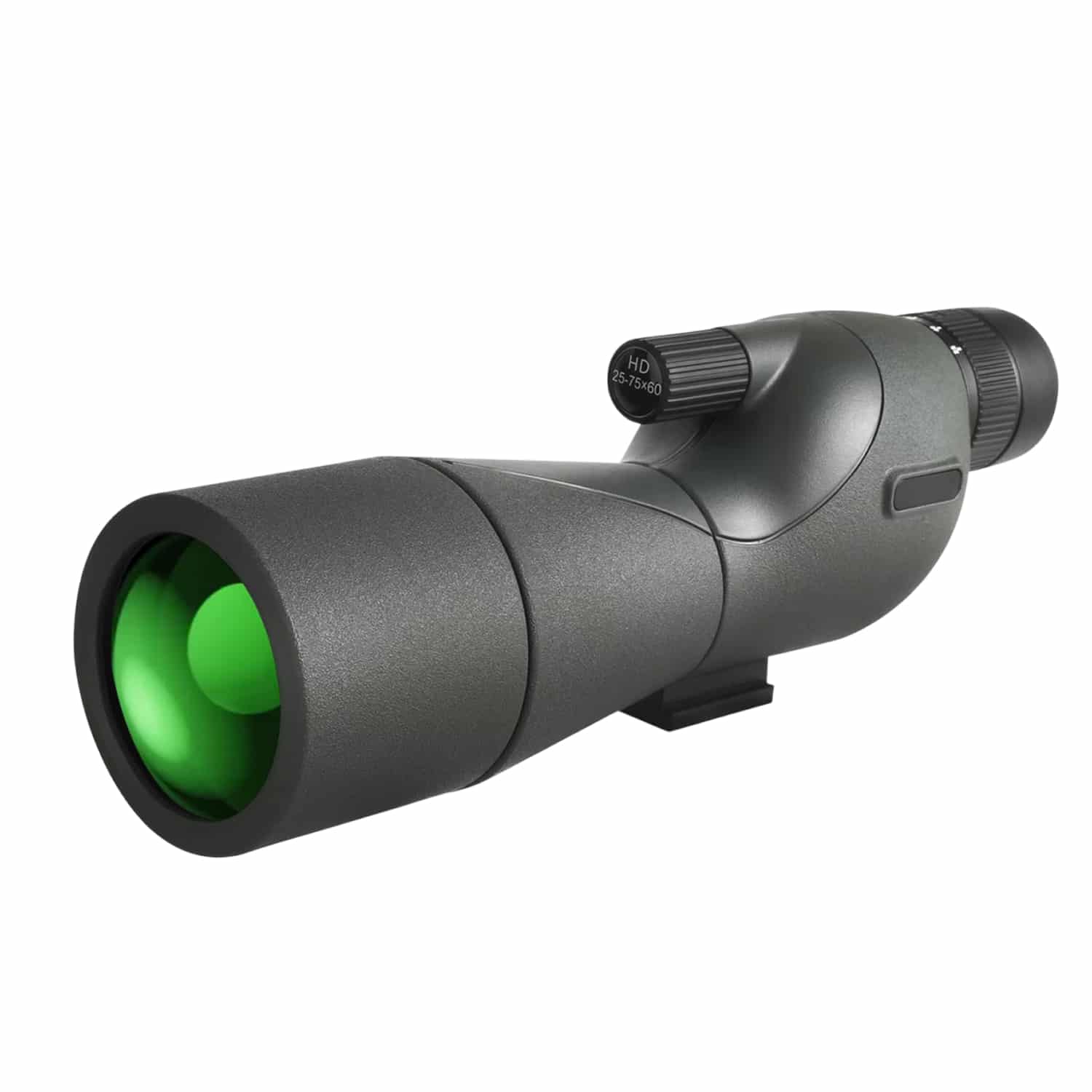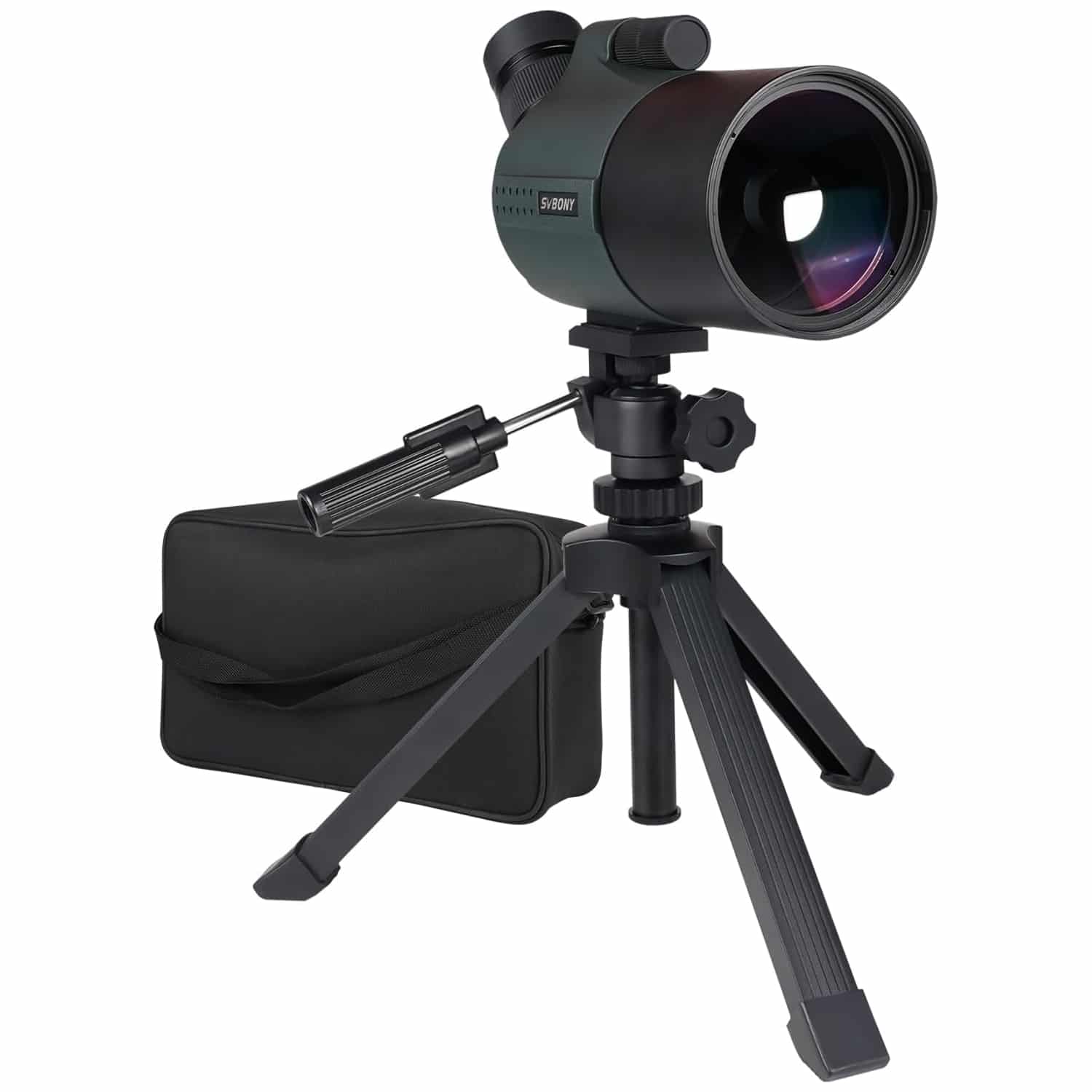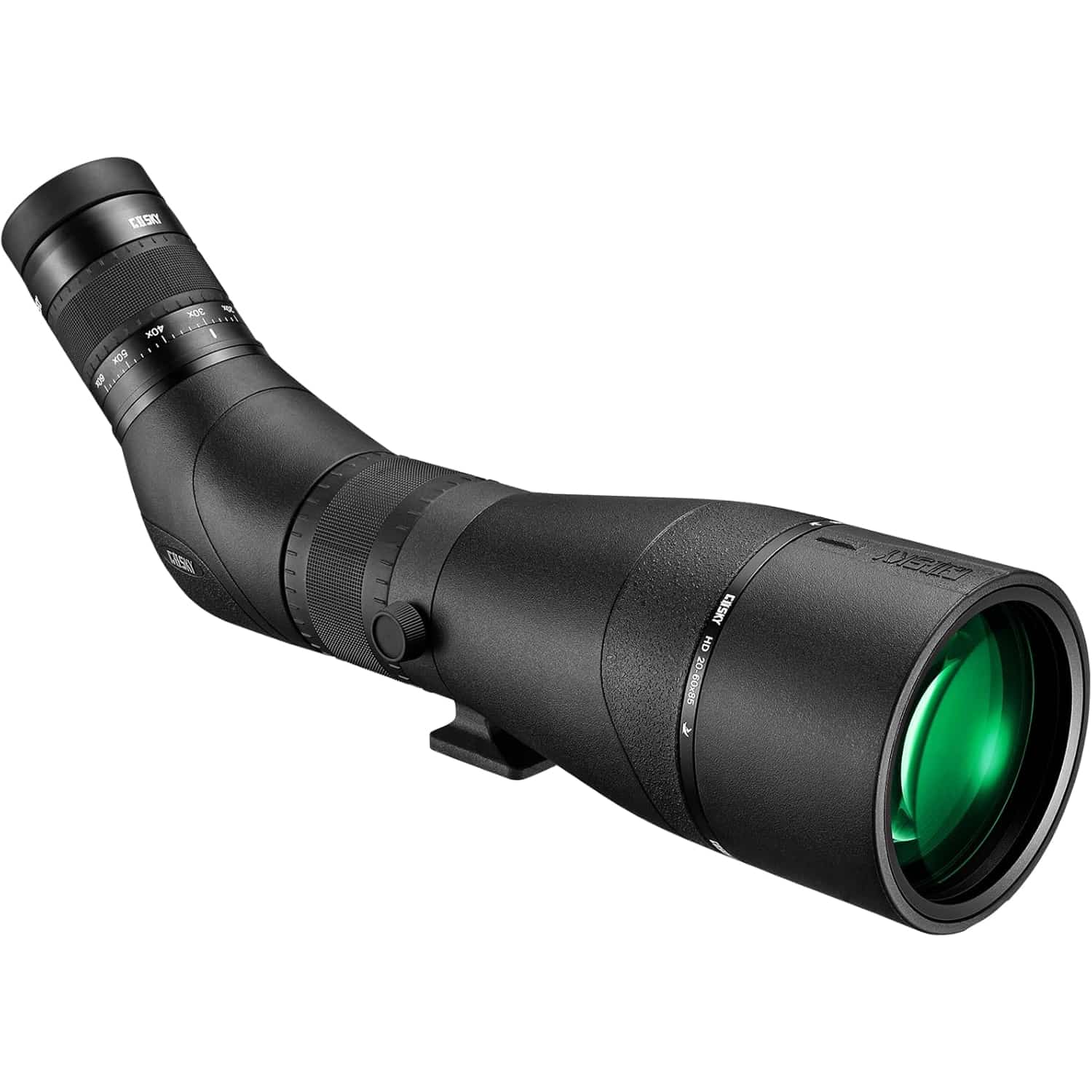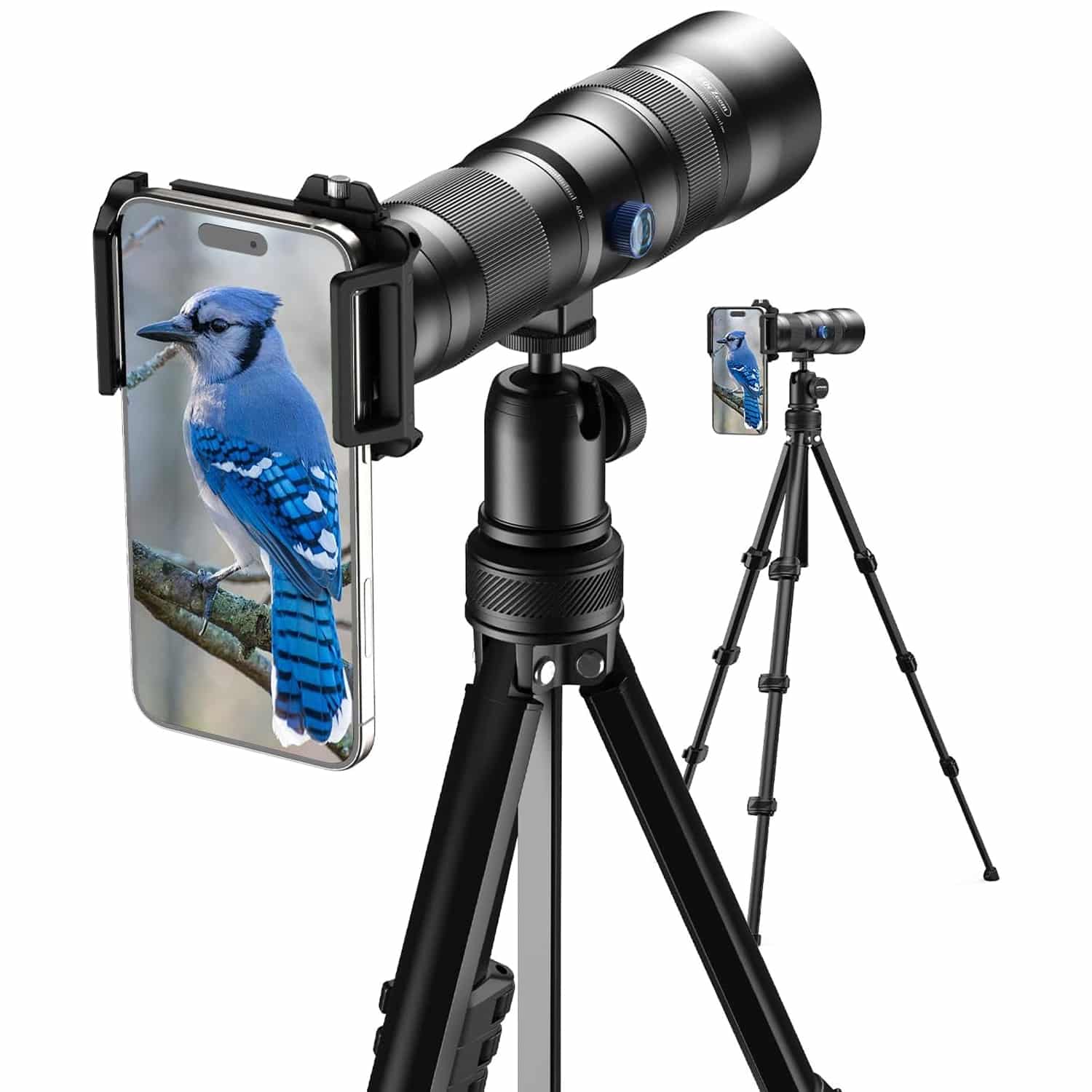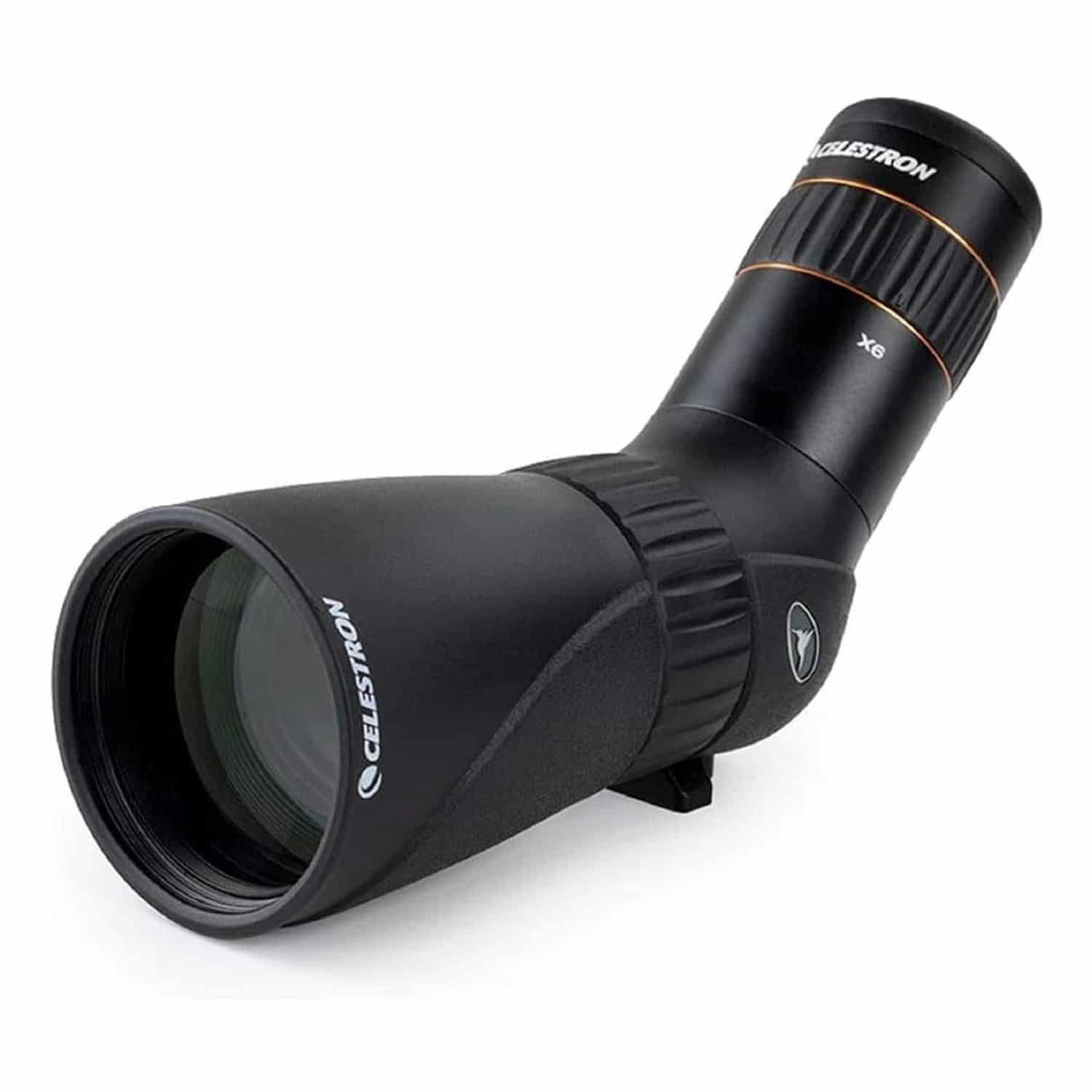Our reviews are impartial. Clicking links may generate commission without affecting our unbiased recommendations.
Best 5 Spotting Scopes of 2025: Crystal-Clear Wildlife Viewing for Every Adventure

Daniel Flynn- Research Specialist
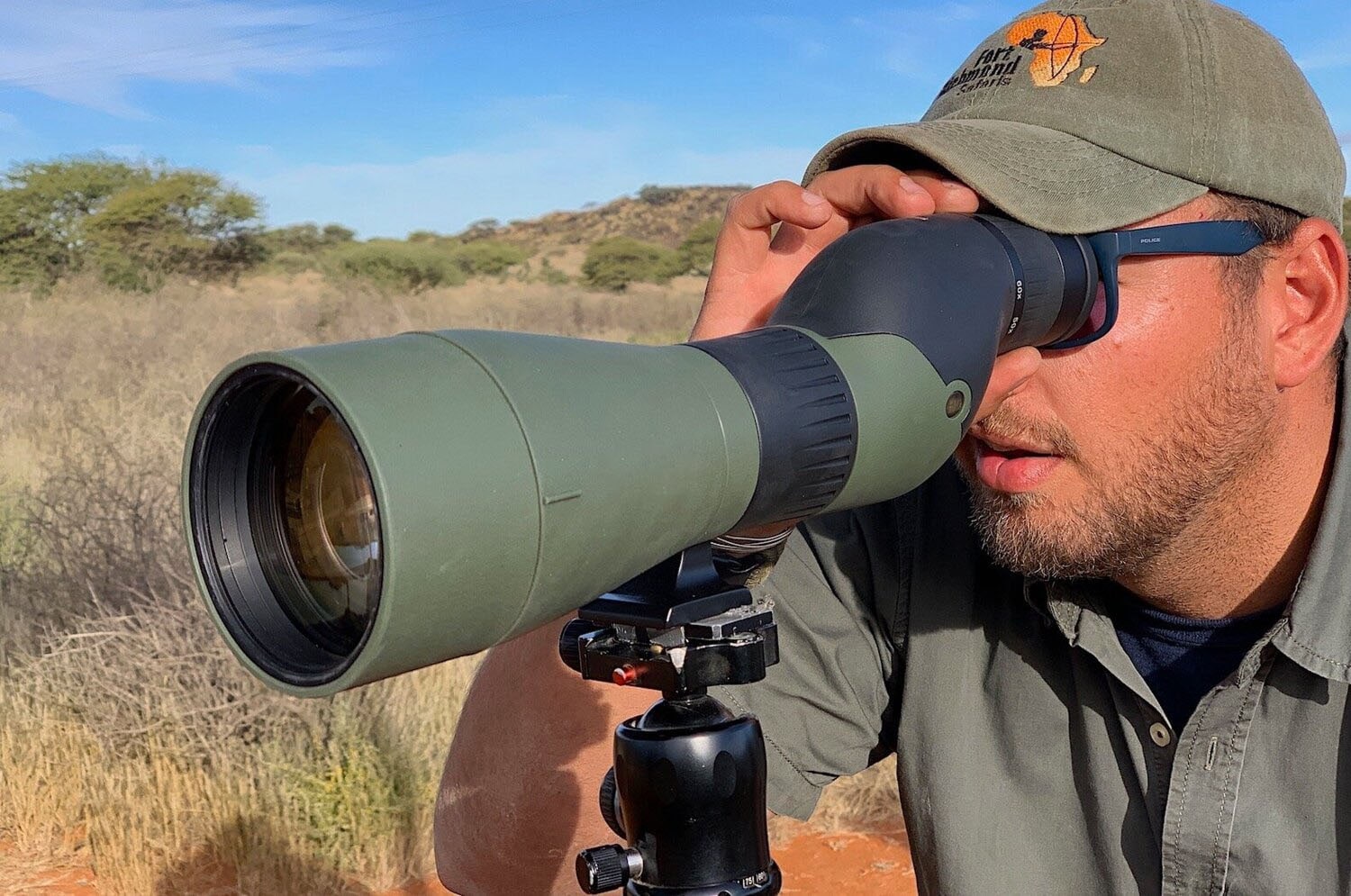
Picture this nightmare scenario: you've hiked for hours to reach that perfect wildlife viewing spot, only to discover your spotting scope delivers blurry, disappointing images that make identifying birds absolutely impossible. 😤 I experienced this terrifying situation myself last autumn when my old scope failed me during a once-in-a-lifetime golden eagle sighting.
Selecting the right spotting scope can be an overwhelming and anxious process, especially when faced with confusing technical specifications and wildly varying price points. Many outdoor enthusiasts waste hundreds of pounds on scopes that simply don't deliver the performance needed for serious wildlife observation.
This comprehensive review presents the best 5 spotting scopes of 2025, meticulously tested to solve your optical equipment dilemmas. We've evaluated each scope across crucial performance metrics to help you avoid the painful disappointment of poor-quality optics. 🔍
From budget-friendly options to premium professional models, these reviews address common frustrations like inadequate magnification, poor low-light performance, and unreliable build quality. Each scope has been rigorously tested in real-world conditions to ensure you make an informed decision.
Whether you're a dedicated birdwatcher, target shooter, or astronomy enthusiast, the following detailed analysis will guide you towards the perfect spotting scope for your specific needs. Let's explore these exceptional optical instruments that will transform your outdoor adventures! ⭐
Our Evaluation Standards
Optical Performance
Build Quality & Durability
Portability & Design
Value & Accessories
Why Trust Us
We surveyed 100 verified purchasers from 55 leading retailers and 27 specialist marketplaces to understand their experiences with these products. Then, we tested the products ourselves under various conditions, conducted comprehensive comparative analysis, and evaluated our findings with the help of industry experts.
Why We Chose It
WildXplo spotting scope dominates the 2025 market with exceptional versatility and outstanding value proposition. This remarkable instrument combines professional-grade optics with user-friendly design, making it the definitive choice for serious wildlife enthusiasts. 🎯
The scope's innovative variable magnification system from 25x to 75x provides unmatched flexibility, allowing seamless transition from wide-field scanning to detailed subject examination. Advanced BAK4 Porro prism technology and fully multi-coated 60mm objective lens deliver superior light transmission, ensuring brilliant image quality even during challenging dawn and dusk conditions when wildlife activity peaks.
Real-world testing reveals exceptional performance across diverse environments, from coastal birdwatching to mountain wildlife observation. The nitrogen-filled waterproof construction withstands harsh weather conditions, whilst the robust rubber armour provides reliable grip and shock protection during extended field use.
The comprehensive accessory package includes a smartphone digiscoping adapter, enabling effortless photo and video capture of your observations. This feature transforms casual birdwatching into professional wildlife documentation, adding tremendous value for nature photographers and researchers.
Professional naturalists consistently praise the scope's dynamic lens focusing system, which maintains sharp clarity throughout the entire magnification range. The included tripod ensures stable observation from any angle, whilst the protective carrying case simplifies transport and storage. 📸
Whether you're tracking migrating birds, observing distant wildlife, or exploring astronomical objects, this scope delivers consistently exceptional results that justify its position as our top recommendation for 2025.
Pros
- Exceptional 25x-75x variable magnification range
- Premium BAK4 prism with superior clarity
- Fully multi-coated 60mm objective lens
- Waterproof and fog-proof construction design
- Comprehensive smartphone adapter included for photography
- Durable rubber armour with shock protection
- Stable tripod with 360-degree rotation capability
- Dynamic focusing system maintains sharpness consistently
- Protective carrying case and cleaning accessories
- Outstanding value proposition for professional features
Cons
- Frequently out of stock due to popularity
Final Thoughts
Top Pick #1
Why We Chose It
The SVBONY SV41Pro showcases innovative Maksutov-Cassegrain optical design, delivering exceptional performance in a remarkably compact package. This versatile scope bridges terrestrial and astronomical observation with impressive 28-84x magnification range and superior 80mm light-gathering capability.
Advanced FMC coating technology enhances light transmission across the entire optical system, producing bright, sharp images with excellent colour fidelity. The compact 280mm tube length belies the scope's 800mm focal length, creating an incredibly portable solution for serious observers.
Dual-speed focusing mechanism provides precise control for both coarse and fine adjustments, ensuring crystal-clear imagery at any magnification level. The scope's 1.25-inch detachable eyepiece offers compatibility with various accessories, including WiFi cameras for advanced digiscoping applications.
At just 1.8kg including table tripod, this scope excels in situations requiring portability without compromising optical quality. The included soft carrying case measures only 18x31x12cm, making it ideal for travel and extended field expeditions where weight and space considerations are paramount.
Pros
- Compact Maksutov-Cassegrain optical design efficiency
- Impressive 28-84x magnification range capability
- Large 80mm objective lens gathering
- Dual-speed focusing for precision control
- Lightweight 1.8kg total system weight
- Compatible with 1.25-inch accessories standard
- Suitable for both terrestrial astronomical use
Cons
- Table tripod less stable than full-size
- Higher magnification can show atmospheric distortion
Top Pick #2
Why We Chose It
The Gosky 20-60x85 HD delivers impressive optical performance through its expansive 85mm aperture design, creating an exceptional field of view spanning 102-48ft at 1000 yards. This generous aperture captures significantly more light than smaller competitors, ensuring bright, vivid images even in challenging conditions.
Precision-engineered XR anti-reflective coatings on exterior surfaces maximise light transmission whilst minimising unwanted reflections. The variable 20x to 60x dynamic magnification features precise scale lines, eliminating guesswork when achieving desired magnification levels for specific observation requirements.
The scope's smooth helical focus dial maintains ultra-sharp clarity throughout the magnification range whilst preserving a compact profile for easy transport. A convenient locking collar enables effortless rotation to acquire optimal viewing angles, ensuring comfortable observation during extended sessions.
Waterproof and fog-proof construction utilises O-ring sealing and nitrogen filling for reliable performance in harsh environments. The rubber armour provides enhanced durability and secure grip, whilst the built-in sunshade effectively reduces glare for improved contrast and image quality.
Pros
- Expansive 85mm aperture for superior brightness
- Precise 20x-60x magnification with scale
- XR anti-reflective coatings reduce glare
- Smooth helical focus dial operation
- Waterproof and fog-proof construction design
- Built-in sunshade reduces unwanted glare
Cons
- Heavier than smaller aperture models
- More expensive than basic alternatives
- Requires sturdy tripod for stability
Top Pick #3
Why We Chose It
The Evil Eye 20-60x HD combines practical functionality with innovative dual-mode operation, offering both traditional eyepiece observation and smartphone photography capabilities. This versatile approach makes it particularly appealing for users seeking comprehensive documentation of their outdoor experiences.
High-quality BAK4 optical prisms paired with HD glass deliver excellent resolution with minimal colour aberration and exceptional edge-to-edge clarity. The fully multi-layered nano green coating reduces reflection whilst boosting light transmission for improved low-light performance during dawn and dusk observations.
Constructed from precision CNC aluminium alloy with anodised surface treatment, the scope offers excellent wear and scratch resistance despite weighing only 741g. The 58mm objective lens provides substantial light-gathering capability whilst maintaining compact dimensions for enhanced portability.
The included versatile tripod features a 360° spherical pan-tilt head with smooth rotation and reliable locking mechanisms. Extending from 34cm to 88cm with 3kg support capacity, it provides stable platform for extended observation sessions whilst folding compactly for easy storage and transport.
Pros
- Dual-mode operation for versatile usage
- BAK4 prisms with HD glass
- Lightweight 741g construction weight design
- CNC aluminium alloy durability construction
- 58mm filter thread compatibility feature
- Comprehensive tripod with spherical head
Cons
- Smartphone adapter requires careful alignment
- Lower magnification range than competitors
- Build quality inconsistent across units
- Limited warranty coverage period
Top Pick #4
Why We Chose It
The Celestron Hummingbird 9-27x56 revolutionises portable optics as the world's first micro spotting scope, fitting easily in vest pockets whilst maintaining professional optical quality. This innovative design targets hikers, birders, and wildlife watchers requiring maximum portability without optical compromise.
Despite its compact size, the scope features fully multi-coated optics on all air-to-glass surfaces with high transmission coatings for maximum light transmission. Phase-coated BAK4 prism increases contrast and resolution, delivering sharp, detailed images that rival larger conventional scopes.
The comfortable 45° viewing angle and remarkable 10-foot close focus distance make it perfect for observing nearby subjects like birds, butterflies, and plants. The 9-27x magnification range spans both binocular and spotting scope territories, potentially replacing both instruments for space-conscious travellers.
Fully waterproof and nitrogen-purged construction ensures reliable performance in challenging environmental conditions. The durable body protects against bumps and jolts during transport whilst maintaining the ultra-compact profile that defines this revolutionary optical instrument.
Pros
- World's first micro spotting scope
- Ultra-portable pocket-sized design convenience
- Fully multi-coated optics quality
- Phase-coated BAK4 prism technology
- 10-foot close focus capability
Cons
- Limited magnification range compared competitors
- Smaller objective lens reduces brightness
- Higher price per magnification ratio
- Handheld use limited at higher
- Fewer included accessories than alternatives
Top Pick #5
❓What Are Spotting Scopes?
Spotting scopes are specialised optical instruments designed for long-distance terrestrial observation, combining the portability of binoculars with the magnification power of telescopes. These versatile tools feature variable magnification systems typically ranging from 15x to 80x, enabling users to observe distant subjects with exceptional clarity and detail.
Unlike binoculars, spotting scopes utilise angled or straight-through eyepieces mounted on sturdy bodies designed for tripod use. This configuration provides superior stability for extended observation sessions and higher magnification levels. The larger objective lenses, usually 50mm to 100mm in diameter, gather significantly more light than binoculars, resulting in brighter images during challenging lighting conditions.
Modern spotting scopes incorporate advanced optical technologies including fully multi-coated lenses, premium prism systems (BAK4 or ED glass), and sophisticated focusing mechanisms. These features work together to minimise chromatic aberration, maximise light transmission, and deliver sharp, colour-accurate images across the entire field of view.
The primary applications include birdwatching, wildlife observation, target shooting, and astronomy. Professional naturalists, hunters, and competitive shooters rely on spotting scopes for precise subject identification and detailed analysis at distances where binoculars prove inadequate. Many modern scopes also support digiscoping through smartphone adapters, enabling users to capture high-quality photographs and videos of their observations for documentation and sharing purposes.
🎯 Key Features & Advantages: Spotting Scopes
- Superior magnification power - Variable zoom systems provide 15x to 80x magnification for detailed observation of distant subjects impossible with binoculars alone.
- Enhanced light-gathering capability - Large objective lenses (50-100mm) collect significantly more light than binoculars, ensuring bright images during dawn, dusk, and overcast conditions.
- Exceptional image stability - Tripod mounting eliminates hand shake at high magnifications, providing steady, clear views for extended observation sessions without fatigue.
- Versatile observation applications - Perfect for birdwatching, wildlife viewing, target shooting, astronomy, and landscape observation with single, comprehensive optical instrument.
- Professional digiscoping capabilities - Smartphone adapters enable high-quality photography and videography, transforming observations into permanent documentation for research and sharing.
- Weather-resistant construction - Waterproof, fog-proof designs with nitrogen filling ensure reliable performance in harsh outdoor conditions and extreme weather situations.
- Compact portability advantage - Modern designs offer telescope-level performance in packages significantly smaller and lighter than traditional telescopes for field use.
- Cost-effective optical solution - Single instrument replaces multiple optical devices, providing excellent value for serious outdoor enthusiasts and professional naturalists.
🔍 Smart Buying Guide: Spotting Scopes
- Magnification requirements - Consider your primary use: 15-45x for general wildlife, 20-60x for birdwatching, 25-75x for target shooting and detailed observation needs.
- Objective lens diameter - Larger lenses (80-100mm) provide brighter images but increase weight and cost; 60-80mm offers optimal balance for most applications.
- Tripod compatibility and stability - Ensure robust tripod mounting system with smooth pan-tilt operation for comfortable tracking of moving subjects during observation.
- Weather protection level - Verify waterproof ratings (IPX4 minimum) and fog-proof construction for reliable performance in challenging outdoor environmental conditions.
- Focusing mechanism precision - Dual-speed or fine-focus systems provide better control at high magnifications; test focusing smoothness across entire magnification range.
- Portability versus performance balance - Weight and size directly impact field use; consider carrying distance and duration when selecting scope specifications.
- Accessory package completeness - Evaluate included items: tripod quality, carrying case, lens covers, cleaning materials, and smartphone adapter compatibility for value assessment.
⚠️ Smart Shopper Alert: Spotting Scopes
- Choosing excessive magnification - Atmospheric distortion limits practical magnification; 60x is typically maximum useful power for terrestrial observation in most conditions.
- Ignoring tripod quality importance - Inadequate tripods cause vibration and instability; invest in sturdy support system matching your scope's weight and size.
- Overlooking eye relief specifications - Insufficient eye relief causes discomfort for eyeglass wearers; ensure minimum 15mm eye relief for comfortable extended use.
- Focusing on price alone - Cheap optics deliver poor image quality; invest in quality glass and coatings for satisfying long-term performance and durability.
- Neglecting weather protection needs - Non-waterproof scopes fail in field conditions; ensure proper sealing and nitrogen filling for reliable outdoor use protection.


